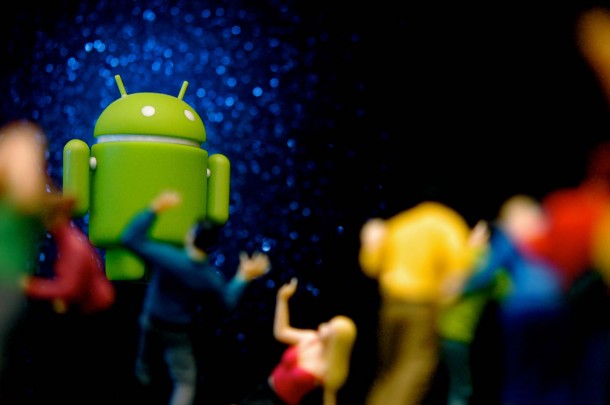
Since the search giant launched Android in 2007, Apple and Google have been locked in a fight market share dominance. So far, Apple has had the advantage due to its sleek designs and usability, however recent years have seen Android phones become sleeker and more aesthetically pleasing. This, paired with their higher specs, is closing the gap in the Apple vs Android fight. The real question is, who will come out top in 2015?
Appearance
Up until recently, iPhone has been leading the way in terms of designs and visuals. iPhones have traditionally been smaller and sleeker, with a more visually appealing interface and a better build quality than Android phones. Their minimalist design looks and feels uncluttered, and they historically have a slimmer build and lower weight than Android.
Lately, Android releases, such as the Sony Xperia Z3 and LG G3, are arguably just as attractive with their sleek cases wrapped around increasingly thinner frames, and their huge screens with incredible screen resolutions.
We’re predicting that 2015 will see new Android releases which rival the aesthetics of Apple, while Apple will continue to churn out pretty, but predictable, iPhones.
Power/ Specs
If Apple have had the looks, Android have had the brains and we don’t expect to see any changes to this relationship anytime soon. To showcase this point, we’ll compare the iPhone 6 and Samsung Galaxy Note 4 as they were released around the same time.
The iPhone 6’s 5.5 inch screen has a 1080 x 1920 resolution with a pixel density of 401 ppi. Impressive, until you compare it to the Note 4’s 5.7 inch screen with Quad HD 1440 x 2560 resolution, providing a 515 ppi pixel density. The iPhone 6’s dual-core 1.4GHz Cyclone CPU power comes in at a second to the Galaxy Note 4’s Qualcomm’s quad-core 2.5GHz Krait 450 CPU, and the same results go to the Note 4 when it comes to camera quality (8MP for iPhone, 16MP for Samsung) and memory (a max of 120GB and 1GB RAM for iPhone, up to 160GB with microSD and 3BG RAM for the Note 4).
Currently it seems that iPhone are relying on their reputation and loyal fans to override the fact that their latest iPhone isn’t that much of an improvement, and is still seriously behind the latest Androids. We expect this to carry on in 2015, with Android specs getting increasingly more powerful and Apple lagging behind.
Usability and Personalisation
It used to be that Apple and Android’s operating systems were two completely different concepts, however they are becoming increasingly similar, probably due to the fact they both keep ripping off each other’s features! Nowadays, they’re likened to two sides of the same coin – similar, but still different enough to have complete opposites in some areas.
Until iOS 8, the iOS operating system was rigid and inflexible in terms of customisability, however iOS 8 has improved this by allowing third party widgets, albeit only in the Notification Center, and keyboards. And despite these positive changes, the only way to make an iPhone truly customisable is to jailbreak it – jailbreaking permits root access to the iOS file system and manager, allowing apps, extensions and themes that are unavailable through the official App Store.
On the other hand, Android’s Lollipop is truly customisable, both with its innate ability to customise the home screens apps and widgets, but also through apps which allow you to override the standard Android look without rooting the phone for access.
iOS has typically been more user-friendly than Android, but their latest update has created a much more visually appealing interface, which allows easier navigation than before, meaning that once again Android is looking to outdo Apple in 2015.
Price
A brand new, latest model iPhone will set you back between £600 and £800 depending on storage and version bought (although there are some competitive contract deals available from retailers like Mobile Phones Direct). Due to the fact that Apple only releases iPhones, it’s very rigid in what consumers can get – the latest iPhone, or an earlier iPhone which may not run the latest operating system.
Android, on the other hand, runs on devices by various manufacturers like Google, LG, Samsung, HTC and more, meaning that the choice of Android phones is unlimited. With prices starting as low as £100 for decent specs, with the higher end phones levelling off at a similar price to Apple but with much higher specs, there’s an Android phone out there for everyone.
All things taken into consideration, it looks like Android will have the advantage in 2015 due to its high specs and flexibility in all areas – price, usability, appearance and more. Android definitely have the market covered, there’s something for everyone. That being said, we’re sure there are many stubborn Apple fans who are happy to buy each new model as it comes out, happily oblivious to the beautiful world of Android.
Do you think Apple or Android will win the war this year?
Photograph by JD Hancock

